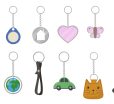Designing an effective ecommerce platform means blending intuitive features with compelling visuals.
A smooth, user-friendly interface makes shopping feel effortless. It helps people find what they want quickly, enjoy faster page loads, and breeze through checkout without frustration. Quick navigation and load times enhance user delight.
At the same time, a unified, engaging design sparks brand recognition and trust. Strategic color palette, typography, and image choices attract customers and hold their attention. Responsive layouts create a seamless experience on smartphones, tablets, and laptops, expanding your reach.
The best platforms marry practicality with beauty, inviting effortless interactions within a rich visual environment. This harmony keeps customers coming back and gives your business an edge online.
Today, we will discuss the significant considerations you must make while creating a user-friendly ecommerce platform.
Stay tuned.
How To Create User-Friendly E-Commerce Platforms? Things To Do
So, without wasting time, let’s check out how to create user-friendly ecommerce platforms, without compromising on aesthetics:
Understanding User-Centric Design:
Today’s shoppers expect more than just a working e-commerce website—they seek smooth, intuitive experiences tailored to their needs. At the core of this user-first approach lies user-centric design, which continuously shapes each stage of development around real customer feedback.
By mapping out clear navigation paths and anticipating how visitors explore products, designers deliver effortless and responsive interfaces. This mentality goes beyond ticking basic usability boxes—it learns from evolving preferences and adapts layouts and features accordingly.
Brands embracing this strategy often see noticeable lifts in conversion rates and stronger customer loyalty. Leading ecommerce consulting experts now champion end-to-end journey mapping, ensuring every click, scroll, and checkout interaction feels frictionless and purposeful.
They rely on iterative prototyping, targeted user tests, and ongoing feedback loops to refine every element, from homepage banners to search filters.
Government resources like Usability.gov highlight best practices for this cycle, stressing the value of regular usability audits and design system governance. With this unrelenting focus on users, platforms remain agile, relevant, and poised to truly delight customers again and again.
Balancing Functionality With Aesthetic Appeal:

When a visitor lands on your site, its visual design speaks before a single word is read—so every pixel matters. Yet elegance alone won’t win sales; the interface must work flawlessly.
When style eclipses substance, shoppers stall in frustration, unable to find what they came for. Brands like Apple and Nike masterfully blend stunning visuals with razor-sharp usability, proving that refined typography, cohesive color stories, and striking imagery should guide users, not confuse them.
Embracing “less is more,” they punctuate clean layouts with purposeful accents, creating an effortless and memorable experience.
Key practical steps—clear, accessible menus; well-structured product pages; and a no-friction checkout flow—ensure customers glide from discovery to purchase. By weaving creativity and functionality into every element, you delight your audience, boost satisfaction, and drive revenue growth.
Importance Of Mobile-First Design:
Our phones are practically glued to us, so it’s no shock that they reshape how we shop online. With over half of all web traffic from mobile devices, making sites work flawlessly on phones isn’t just nice—it’s a must.
Designers are flipping the script, starting with a mobile-first mindset: They build for tiny screens first, then scale up for bigger ones. It’s like making sure the heart of your store—your products and info—shines no matter what device you’re using.
This approach feels like a warm welcome to phone-scrolling shoppers, meeting their need to hop between devices without a hitch.
The folks at Nielsen Norman Group point out that it’s about getting mobile quirks right, like swiping with your thumb or tapping without frustration. Think responsive designs that shift smoothly, pages that load in a blink, and navigation that’s so easy it’s second nature.
I’ve fumbled through clunky mobile sites before, and let me tell you, it’s a vibe-killer. But when a website is snappy and intuitive, it’s pure happiness.
By nailing these mobile-first details, e-commerce sites don’t just keep up—they win hearts, pulling in more people and keeping them hooked.
Role Of Personalization In Enhancing UX:
In today’s whirlwind of online shopping, personalization is the secret sauce for winning hearts and keeping customers coming back.
By digging into someone’s browsing habits, past purchases, or even their wishlist, businesses can create a shopping experience that feels like it was made just for you.
Take Amazon or Spotify—they’ve nailed it, using clever data tricks to suggest products or playlists that feel like they’re reading your mind. It’s like having a friend who gets you; that vibe keeps you clicking and coming back.
Pulling off this magic takes some serious tech—analytics tools and systems that can keep up with your real-time moves. But when it DOES work? Oh, it’s gold.
Shoppers are happier, spending more, and sticking around for the long haul. I’ve had moments when ecommerce platforms knew exactly what I wanted, and it felt like a high-five through the screen.
Building those data systems and algorithms costs a bit, but the payoff is huge. As more shops jump on the personalization train, the real winners will be crafting experiences that hit home with your unique style and needs, turning casual clicks into loyal fans who can’t stop raving about their favorite brand.
Strategies For Improving Website Load Speed:
Fast-loading pages are the lifeblood of any e-commerce site, defining user satisfaction and directly impacting revenue. In an age of instant gratification, shoppers expect near-instant page loads, and even minor delays can erode engagement—and ultimately, sales.
Research shows that a single second’s lag can cut conversion rates by 7%. That statistic underscores why speed optimization must top every e-commerce team’s agenda.
Essential tactics include compressing images to shrink file sizes without visible quality loss, minifying CSS and JavaScript to reduce payload, and configuring browser caching so repeat assets load locally.
Equally critical is leveraging a Content Delivery Network (CDN) to serve assets from edge servers nearest to each visitor, slashing load times.
Routine performance audits using tools like Lighthouse or PageSpeed Insights reveal bottlenecks and track improvements over time.
By tackling each layer of the stack—from server configuration to front-end best practices—brands deliver faster, smoother experiences that keep customers engaged, happy, and more likely to complete purchases and foster greater long-term brand loyalty through continuous engagement.
Integrating Trust Signals for Consumer Confidence:
Online shopping’s a gamble when you’re not face-to-face. That’s where trust signals save the day—things like that little padlock for SSL, real customer reviews, secure payment logos, and clear-as-day policies.
They’re like a warm nod from a shopkeeper, saying, “You’re safe here.” Get those right, and you’re not just easing nerves—you’re turning “maybe” into “sold.” I’ve gone from biting my nails to clicking “buy” because of them. For many folks, those signals are the push they need to commit.
Being open about returns, warranties, or how to reach you? That’s next-level. It’s like the site’s promising, “We’re legit, and we’ve got you.” Turns a random webpage into a place you’d shop again. Trust is the glue in all this. Businesses that prioritize it aren’t just chasing quick cash—they’re building a vibe that keeps people returning, loyal as ever.
Utilizing Data Analytics To Inform Design Choices:
Running an online store is like navigating a busy market—you need to know what’s drawing people in and what’s sending them away.
That’s where data analytics swoops in, like a trusty guide. It hands you insights to fine-tune your shop and make smart calls. By keeping an eye on things like bounce rates, how many folks visit, where they get stuck in the buying process, or what they’re clicking, you get a real feel for what your customers want.
Tools like Google Analytics are the unsung heroes here. They give you a front-row seat to how people interact with your site.
It’s like having a map of their every move! With that information, you can tweak your site’s design, smooth out the shopping experience, and make everything click—pun intended—in a way that feels right for your customers and your goals.
I’ve seen case studies from all sorts of businesses, and the story’s the same: using data leads to better user experiences, hands down. It’s the difference between guessing what works and knowing it. That’s what separates a site that’s just hanging on from one that’s killing it.
With data analytics, your e-commerce platform becomes a living, breathing thing—always improving and always surprising people with how spot-on it feels. It’s not just about meeting expectations; it’s about blowing them out of the water.
The Future Of E-Commerce Platforms And UX Design:
As technology continues to evolve, so does the landscape of e-commerce platforms and user experience design.
Online shopping’s changing so fast it’s almost hard to keep up, but it’s honestly kind of a thrill. Things like machine learning, augmented reality, and AI will flip e-commerce in just a few years.
Imagine AI acting like your best friend who nails gift ideas, picking out stuff that feels handpicked for you. Then there’s augmented reality—picture trying on a jacket or seeing a new couch in your living room without leaving your sofa. It’s like the line between online and real life just melts away.
When shops use these slick tools, they’re not just showing off—they’re making every visit feel special and fun.
Like predictive analytics, knowing what you’re after before you do, or AI chatbots swooping in like a store clerk with all the answers. It’s less about tech flexing and more about every click feeling like it’s for you, building that warm, fuzzy loyalty that keeps you hooked.
I’ve watched friends geek out trying virtual sunglasses, their eyes lighting up. Shops that keep up with these trends, always tweaking and evolving, aren’t just in the game—they’re setting the pace, crafting experiences that blow shoppers’ minds and stay ahead in this wild e-commerce race.




























